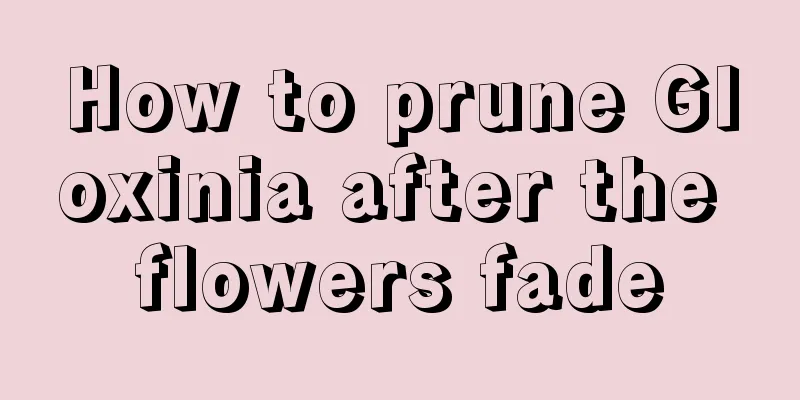How to prune Gloxinia after the flowers fade

1. When to pruneWhen pruning, be sure to pay attention to whether new buds have formed on the main stem of the African violet. If there are no new buds, the nutrients will continue to be supplied to the bulbs and corms, making the bulbs and corms thick, but you can preserve it and continue planting when the temperature is suitable. If there are new buds, as long as the temperature is right, they will grow and bloom soon, and the plant shape can be made more perfect, making it easier to cultivate for ornamental purposes. 2. Time and temperature controlIf it is winter and the temperature is low, even reaching five degrees Celsius, new buds will not sprout into new plants even if there are new buds after pruning. At this time, you should keep it and select a leafless stem of appropriate length, about 3-4 cm, and store it in sand for later cultivation. When storing in sand, attention should be paid to maintaining the temperature, which should not be lower than degrees Celsius. The sandy soil needs to maintain proper moisture. If it is too wet, it will cause rot, while if it is too dry, it needs to be sprayed with clean water to prevent the tubers from shrivelling. After the African violet tubers sprout, the buds should be pruned to facilitate better growth of the plant. 3. Parts to be trimmedAfter the plant blooms, many people may let it grow along the flower path, but in fact, it is more appropriate to trim the flower path, which can reduce nutrient waste and accumulate more power for the growth of flowers. When the side buds grow bigger, you can keep only the main stem and side buds to encourage the side buds to bloom quickly. The side shoots that grow after beheading will be stronger and the overall shape will be better. Not only does pruning need to be done after the flowers fade, but under normal circumstances, if the leaves of the flowers affect their growth, they need to be partially pruned again. For plants before flowering, you can also pinch the top branches to promote lateral growth. If you find yellow or spotted leaves, you should promptly determine whether the plant is diseased and prune off the problematic leaves in time to prevent damage to the health of the entire plant. Before pruning, in order to make the plant more ornamental, you can lower the temperature slightly when it is in the bud stage, prolong flowering, and reduce plant metabolism. |
<<: How to grow goldfish spider plant in winter
Recommend
The flower language and cultural significance of Chickweed
The flower language of Chickweed Longevity and he...
How many years does it take for chestnuts to bear fruit?
Introduction to chestnut planting When chestnuts ...
How to raise free range pigs
Free-range pig farming is a popular farming metho...
The difference between Datura and Okra
The difference between Datura and Okra ~ Leaves D...
The effects and functions of blueberries, the benefits of eating blueberries
1. Cancer prevention Blueberries have high nutrit...
How to prune roses (pruning time and method)
When to prune roses The best time to prune roses ...
Garlic freckle removal method
1. Choose garlic cloves First of all, you should ...
Huang Qiuying's breeding methods and precautions
1. Lighting It is a light-loving flower plant. Wh...
When is the best time to plant gardenia seeds?
Gardenia seed planting time Gardenia is a perenni...
How to fertilize Fragrant Wood
Fertilization method The fragrant wood is a plant...
The main value of pepper wood
Ornamental value Its leaves are brightly colored ...
Silver Star Pests - Root Mealybugs
The consequences of silver star encountering root...
Aloe cutting method
Aloe is a herbaceous plant of the Liliaceae famil...
What flowers are suitable for growing in Yangquan? What are the city flowers and trees?
1. Climate characteristics of Yangquan Yangquan h...
How long does it take for Raul leaf cuttings to germinate
How long does it take for Raul leaf cuttings to g...









